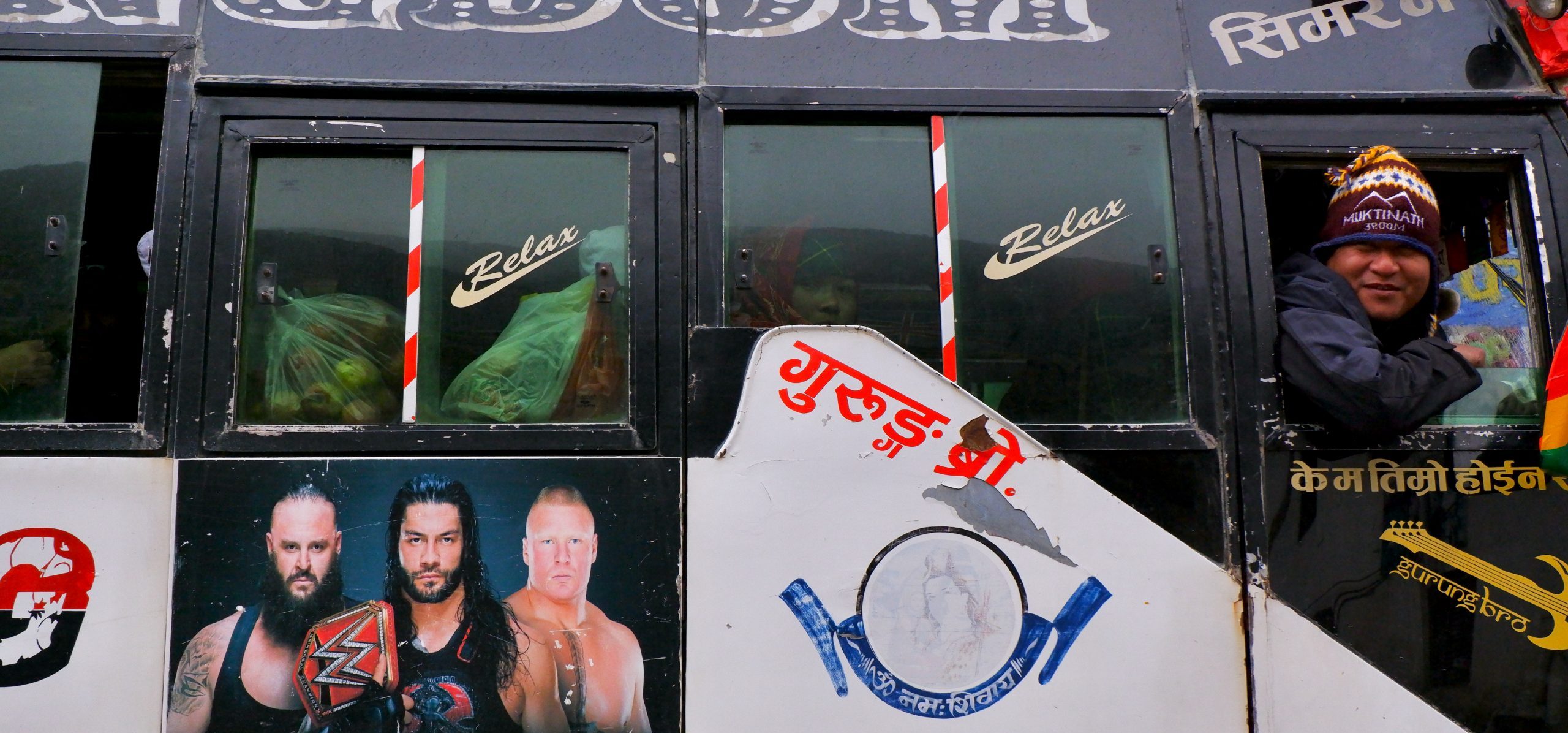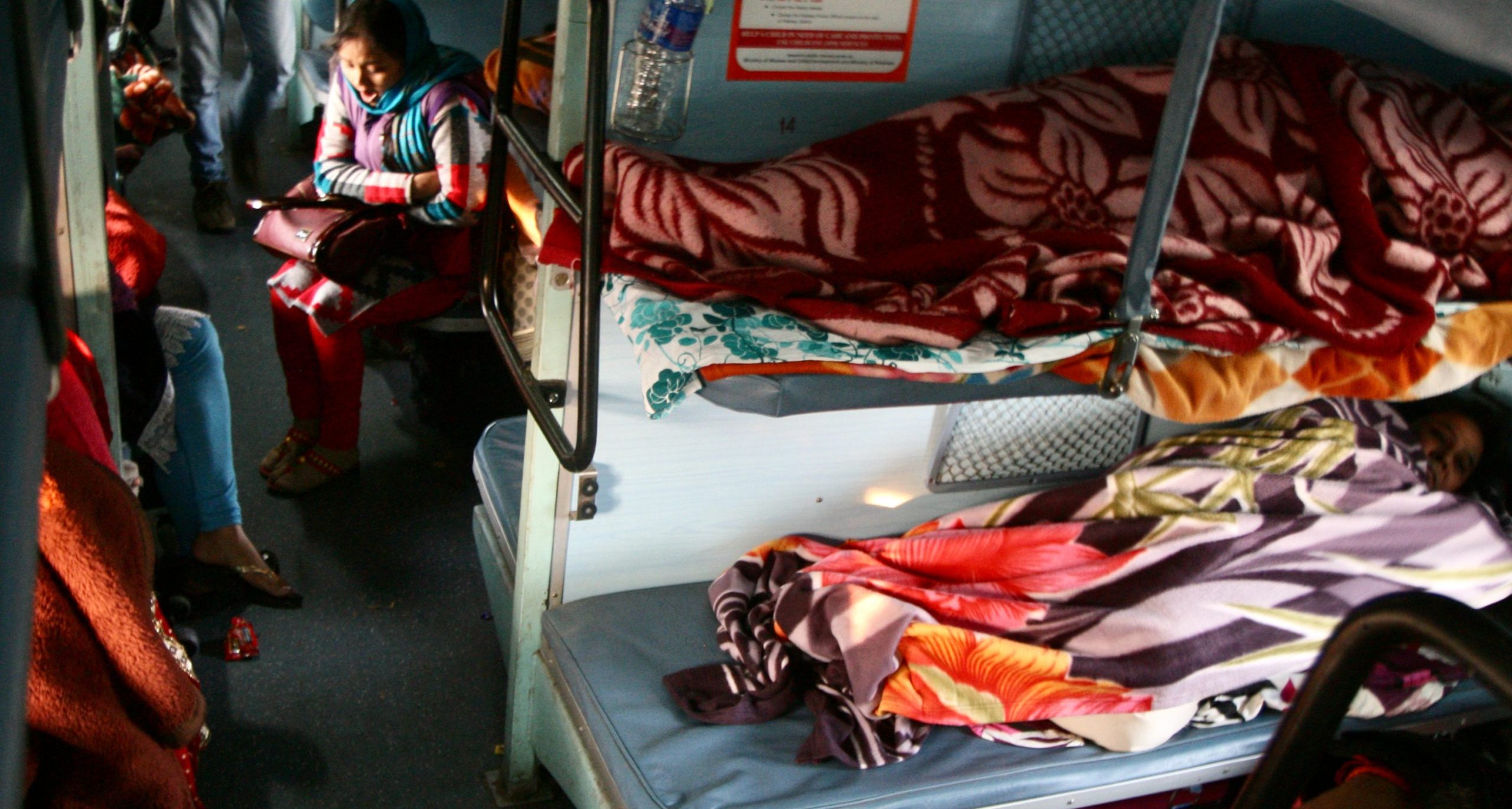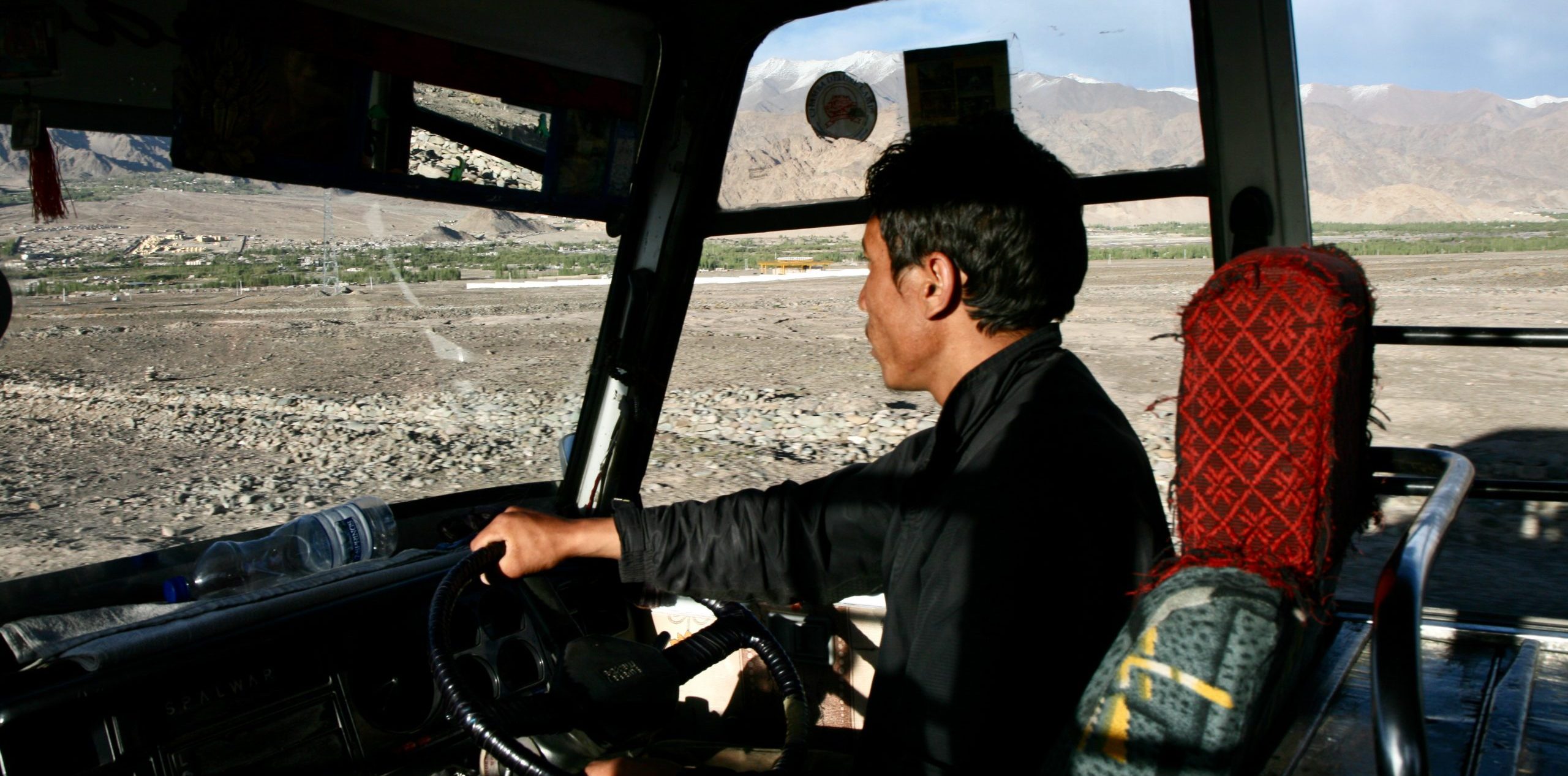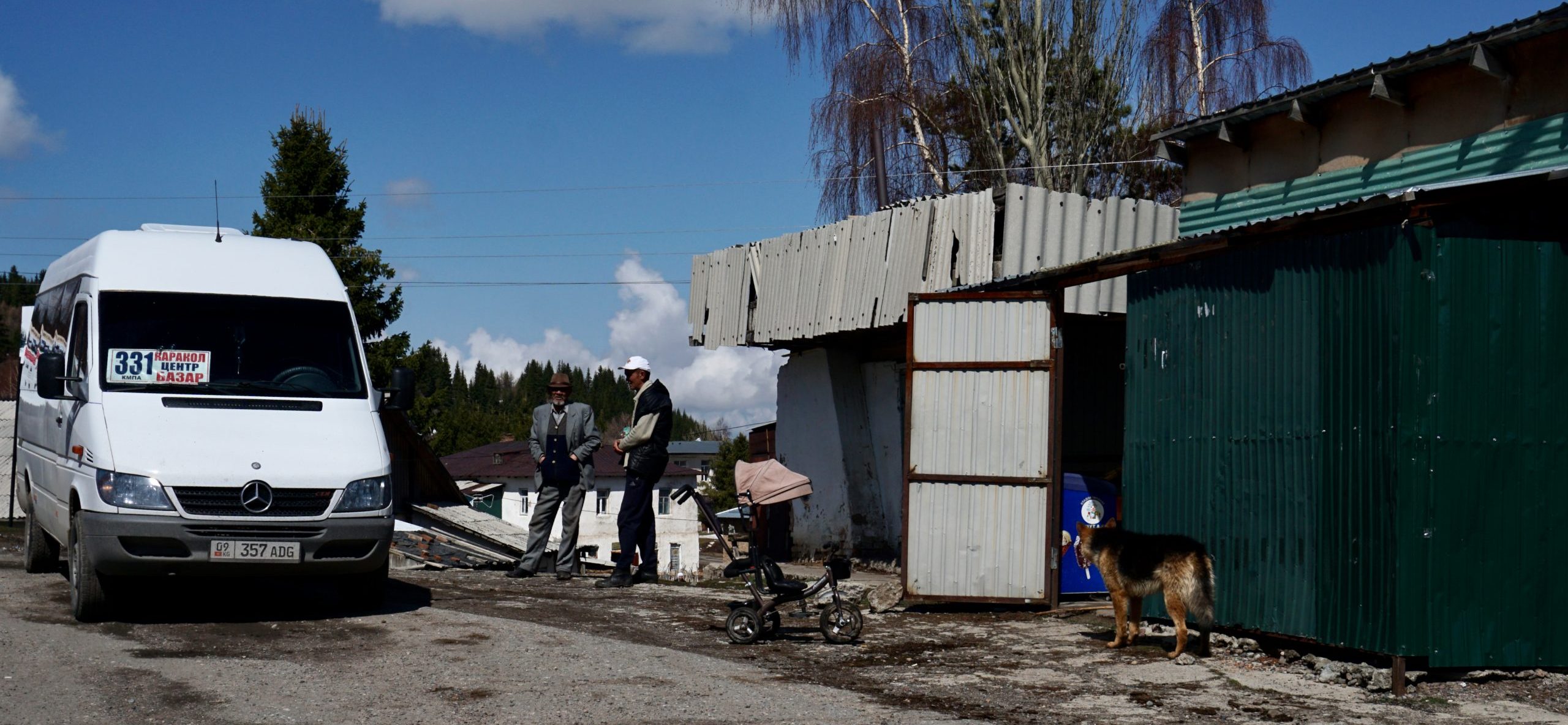Train, Bus and Shared Taxi
The most convenient way to get around the country is by car with a driver – in all our destinations. You can stop whenever you want, you have space and the vehicles are faster and more comfortable. But there is also a disadvantage: you don’t travel like the locals! To get to know an area and the people better, you could also choose the usual means of transport for once. This is not only more educational and exciting, but also cheaper and more ecological!

Train
The Indian railway system is one of the most fascinating and largest in the world. There are different classes and except for the “wooden class”, only as many seats/loungers are sold as there are. The reservation system works excellently. There are trains for shorter distances during the day, which are already worthwhile. But the best experience is a night journey – you can easily get in touch with fellow passengers, have comfortable couches with clean sheets and blankets (photo is from cheaper class) and slumber comfortably towards the destination station. Besides the usual trains, India also has something special to offer: a ride on the Toytrain. There are three of these lines (2 in Himachal Pradesh, 1 near Darjeeling). Built in the early years by the British, small trains puff up the mountains at walking pace to the former summer residences. A living piece of colonial history. There are also a few other interesting routes for railway fans.
Georgia has a small but fine railway system. A few routes are served by small trains that take you comfortably and punctually to your destination. An overnight train runs between Tbilisi and Yerevan – an interesting connection if you want to visit both countries.
Unfortunately, there are hardly any or no railway lines in our other destinations.

Bus
Buses go everywhere. Long-distance routes in India (preferably driven at night) are driven by AC Volvo buses, i.e. luxurious buses with adjustable seats, some legspace and they are also clean. In Nepal, there are special tourist buses (which are of course not only used by tourists), which have a little more seating space and better legspace than the narrower local buses. However, they are more likely to be used during the day. There are no toilets anywhere on board, but there are frequent stops for meals. In Kyrgyzstan, Georgia and Armenia, routes are served by buses or minibuses, depending on popularity. In addition to the long routes, there are also many opportunities to sit among the locals on shorter routes. Some buses leave at certain times and only go to certain stops, on some routes you drive when the bus is full and stop at every person along the road who is willing to take a ride.

Shared Taxi/Marshrutka
In some parts of India (e.g. Sikkim, Darjeeling area, Zanskar), Nepal and Kyrgyzstan, shared taxis are common. A car is crammed with passengers (yes, the seats are usually quite cramped) and only starts when all the seats are taken. Since the cars are smaller and often more off-road, you can get around quite quickly. Most drive longer distances and there is little passenger change. The routes are fixed and stops are made for toilet and food. Only individual photo stops are not common. Since there are relatively few passengers, it is easier to strike up a conversation than, for example, on a bus. Sometimes you get really lucky with fellow passengers and the time passes quickly with conversations – but sometimes everyone is preoccupied with their own thoughts. Of course, you have to bring some time with you for the departure, especially if you are the first customer. But you still have a free choice of seats (sometimes front seats are more expensive). In any case, it is a more ecological and cheaper way (compared to a taxi) to get to know the life of the locals better.
Marshrutka is the name of the minibuses/sprinters in the post-Soviet countries. These sometimes leave at a certain time, sometimes they wait until they are full. They are used by a large part of the population and are therefore a good opportunity to share their everyday life.

